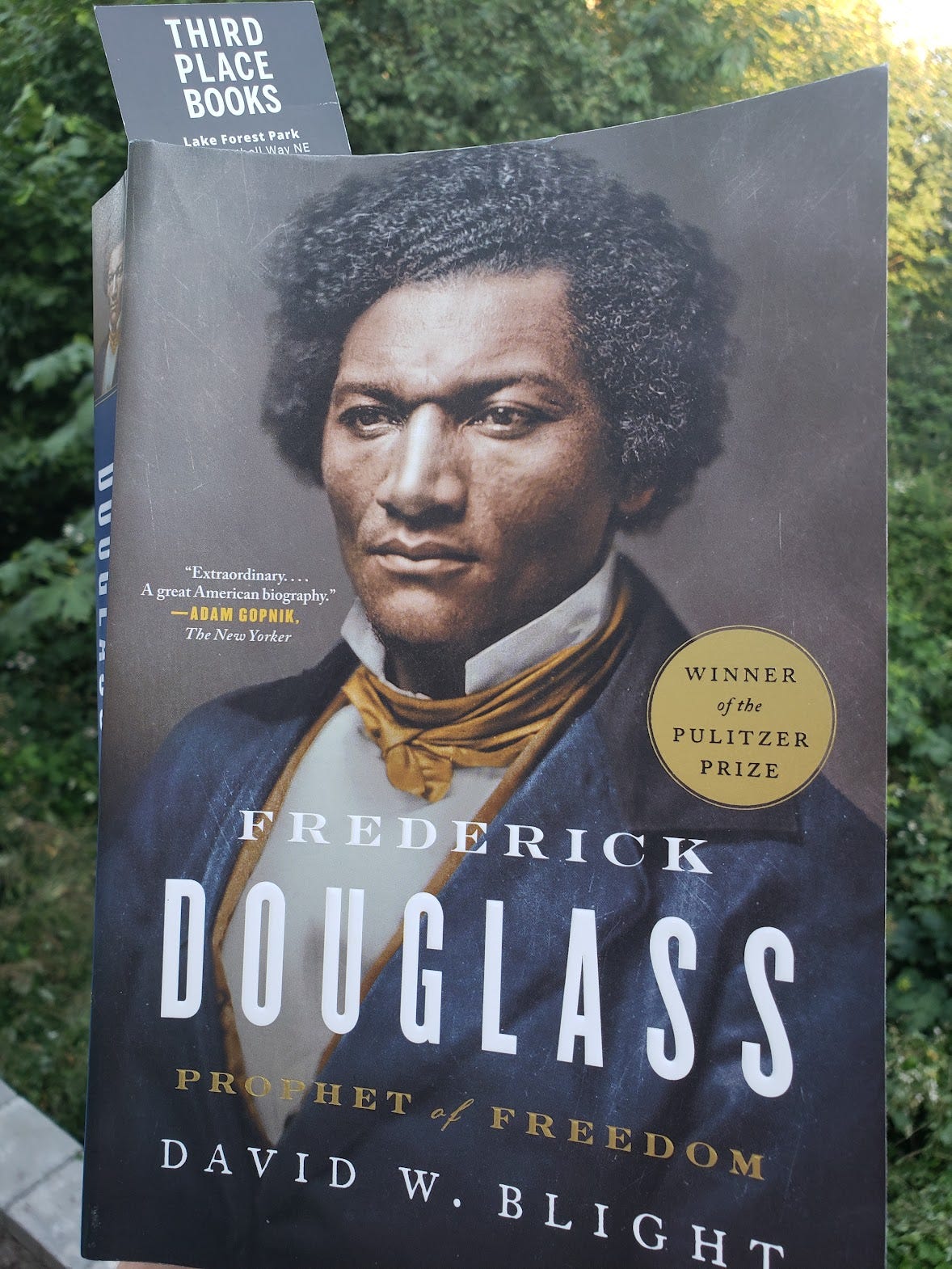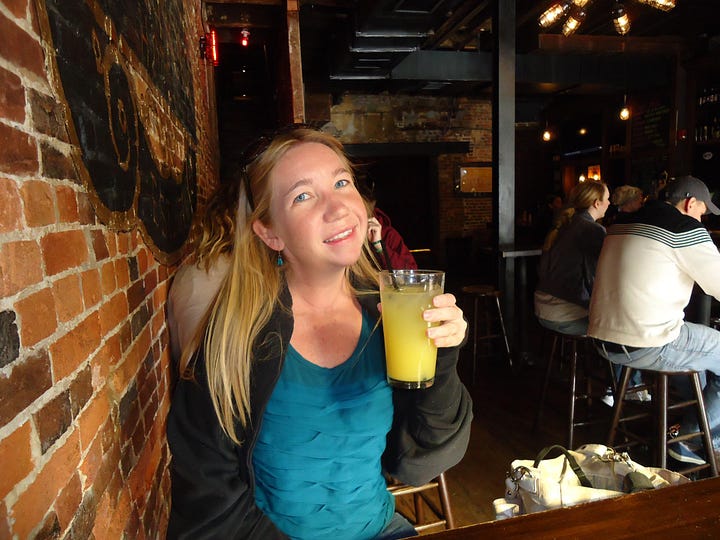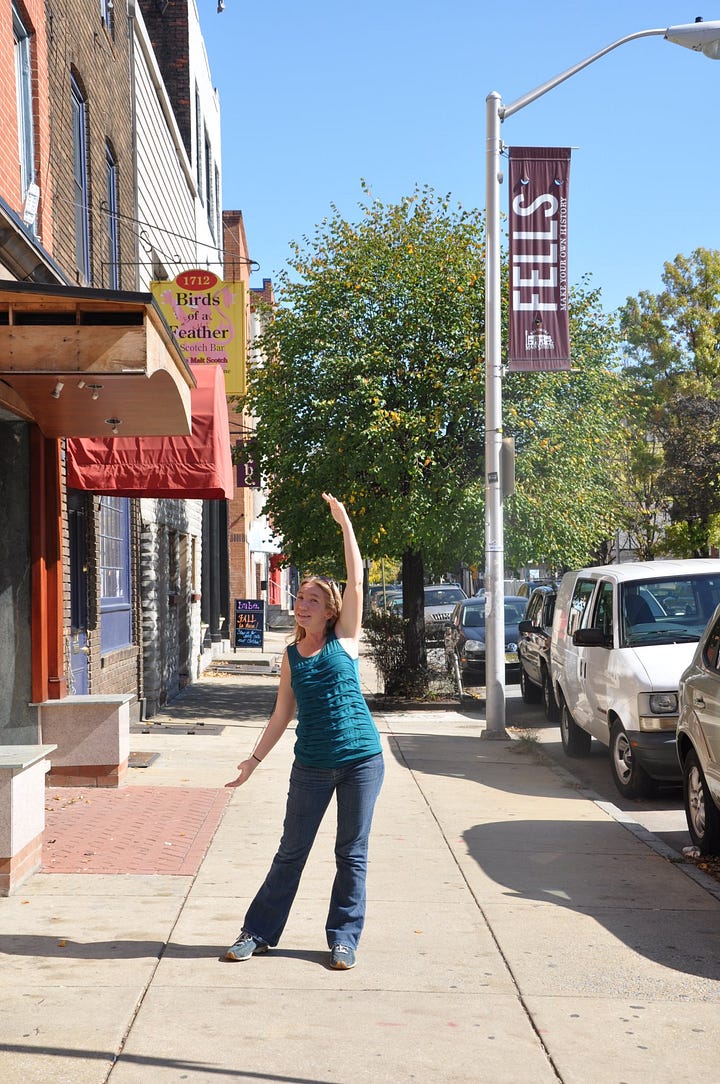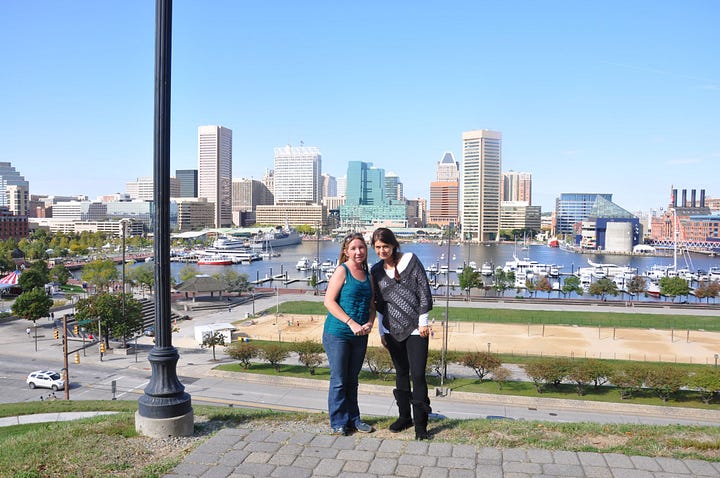The One Thing I Remember About Baltimore
This is the 2nd installment of my series on how I teach my students about the Haitian Revolution. Get ready to read about Frederick Douglass.
A lesson to teach: A Frederick Douglass speech
In addition to escaping slavery, speaking out as an abolitionist, working as a newspaper editor, writing, advising President Lincoln, and traveling the world as an international speaker, Frederick Douglass was the US ambassador to Haiti.
In 1893, Douglass gave a speech at the Chicago World’s Fair about Haiti. He speaks about…
Racism: “Haiti is black, and we have not yet forgiven Haiti for being black.”
How America had its eye on taking over a Haitian harbor: “Haiti will not surrender peacefully, and it would cost altogether too much to wrest it from her by force.” [Spoiler: the US military does not heed his warning]
Americans fomenting chaos in Haiti for their nefarious purposes: “…men in high American quarters have boasted to me of their ability to start a revolution in Haiti at pleasure.”
Religion: “…the conscience of the Christian world slept profoundly over slavery”
I’ve taken Douglass’s speech and shortened it to just 10 paragraphs for my students. If you’d like a condensed version, here it is. I’ve also taken out Douglass’s word Negro and replaced it with Black at the request of students.
Here are a couple of options to help students work through the reading. I like having student draw a sketch of each paragraph and then record their “golden line.” Also included in the document are some comprehension questions.
Next week I’ll cover additional readings on Haiti and how I have my students discuss and write about why Haiti has been left out of their textbooks.
A book to read: Frederick Douglass: Prophet of Freedom by David W. Blight
This is a BOOK! A big one.

I started this book after a stint on the Visions of Education podcast. One of the hosts is obsessed with this book so I picked it up and read about half of it after chatting with him.
And then, because the book is a hefty 700+ pages, I took a break from reading it. For a year. The next time I taught my students about Haiti, I returned to read another chunk of it. Currently, in the middle of teaching Haiti yet again, I’m back to it. I’m currently on page 475 and hoping to finish it before Spring Break. I’m always in the middle of 5 or 6 books though, so we’ll see how it goes.
This book is such an achievement.1 I’m always in awe of the sheer amount of research that goes into historical tomes like these. Every single corner of Douglass’s life has been turned over and examined. I’m particularly fascinated by the ambivalent feelings Douglass had about Lincoln and the Civil War (should he encourage Black folks to fight? Or not?) It’s such a weighty reminder that the condensed version of history we teach and learn is just the tip of the iceberg.
Thinking about my students from Las Vegas who told me that they would physically fight their enslavers, I also was fascinated to learn that Frederick Douglass did just that.
“Douglass nevertheless admitted that he did not at first know from ‘whence came the daring spirit’ and his ‘fighting madness.' The two grunting fighters grappled and threw each other on the ground. Douglass say he strangled Covey by the throat, drawing blood with his nails, and his tormentor simply gave up.”
The story of an enslaved person fighting their enslaver (and winning!) and living to tell about the tale seems impossible, and yet here it is. Again, the nuances of history remind us of all the ways we’ve simplified the past.
A place to explore: Baltimore, Maryland
In last week’s newsletter, I lamented that my lesson plan and recommended book are about Haiti I had not yet been to Haiti.
I have a similar problem this week. Frederick Douglass was born in Baltimore, Maryland. And I HAVE indeed been to Baltimore! Yay!
But wait.
I did absolutely nothing historical or even vaguely intellectual whilst in Baltimore. I did not visit Fort McHenry or Edgar Allan Poe’s House. I did not visit the Frederick Douglass-Isaac Myers Maritime Park. According to old pictures of myself in Baltimore, I did some day drinking and wandered around Fell’s Point, having no idea that young Frederick Douglass walked those same streets. Do I remember Fell’s Point? I do not.




My friend and I were in Baltimore because we were driving from Miami to Boston to Villisca (Iowa), to Seattle in my Honda Civic, trying to figure out where we wanted to live when we grew up.
The only thing I remember about Baltimore was this one moment as we were driving around downtown with our windows open. My friend was navigating. I, as usual, was ignoring her.
“This is a one way street,” she said as I signaled to turn left onto the four-lane avenue.
“One way!” She said, increasingly alarmed as I turned the wheel left. Street arrows pointed right, probably. I wasn’t paying attention to those either.
“One way!” She screamed. “Wrong way!”
From the sidewalks of Baltimore, people also yelled warnings at us.
I finally caught on and frantically pulled a U-turn.
From the sidewalk, someone shouted out “GIRRRRRL, YOU SO DUMB!!!!”
Truer words have never been shouted.
At this point, my friend ducked below the window out of embarrassment.
We lived. We did not die of car crashes or embarrassment. For the past decade, whenever I do anything stupid, my friend shouts (with glee) “Girl, you so dumb!” She frequently has occasion to shout such words.
So that’s my Baltimore story. Should you travel to this delightfully historic city, don’t be like me.
Should you want to read about digging through Frederick Douglass (and Harriet Tubman!) history in Rochester, check out this article here. It’s from the NYTimes, but I clicked the “give a free gift” link so the first person to click the link wins!
I mean writing it. TBH, reading it seems like an achievement also.



Great story-telling, Jenna! You make places, as well as history, come alive!
Jenna! I’d like to say that my first impulse after reading this story was to immediately go online and reserve a copy of the book you mentioned with my local library. I’m impressed with the way you are bringing us into the conversation of the Haitian Revolution and how much we don’t know about it. Or, to confess, I knew nothing at all about it until you brought it to my attention.
But I didn’t. I was too engrossed with your Baltimore story.
My own story is pretty tame by comparison. I was with my daughter more than a couple of decades ago. She was thinking about attending the Maryland Institute College of The Arts, and I was along for the ride. We stayed at a place that could easily have been one of the many houses associated with Poe. There was some association with a raven, of course. I remember having a crab cake dinner in a restaurant in the newly gentrified harbor, watching an iron pour, and wandering around the city as she sat with other potential students in seminars secretly designed to help them get parents to fork over a s**t load of money for an (admittedly) worthwhile and prestigious degree. She ended up with an MFA in design from another institution, that has served her quite well.
Your story’s better. Thank you for sharing it.